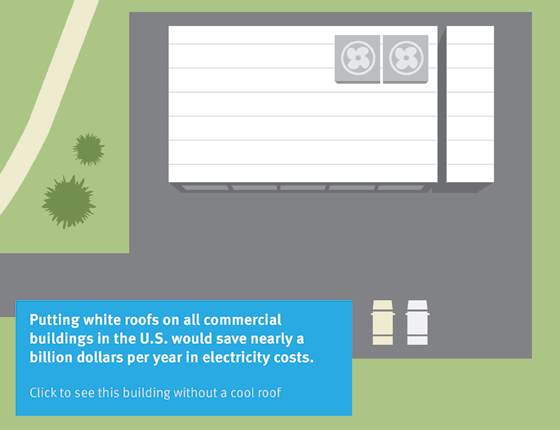Cooler roofs mean cooler buildings.
Cool roofs reduce the overall energy consumption of individual buildings by lowering air-conditioning demand. If the building is not air-conditioned, cool roofs can make the building considerably more comfortable.


Reducing air-conditioning demands in the U.S. by installing cool roofs on 80% of the 2.58 billion square meters of commercial building conditioned roof area could save 10.4 terawatt hours of electricity and $735 million annually.
It has long been known that white or light colored roofs, cool roofs, reflect more of the sun’s light and make buildings cooler during warm seasons. The traditions of white buildings on the Greek Islands and white washed roofs in parts of India point to a popular understanding of this phenomenon.
In today’s age of air-conditioning, cool roofs reduce the overall energy consumption of individual buildings by lowering the cooling demand. If the building is not air-conditioned, cool roofs can make the building considerably more comfortable. Recent studies have shown that white roofs can reduce the air-conditioning demands of a building by more than 20%. Building codes in the U.S., such as California’s Title 24 Energy Efficiency Building Standard, are starting to recognize this benefit.
Cool roofs are easy to implement for commercial and high-rise residential buildings. The roofs of these buildings are generally not visible from the street, so there is little objection to installing a white (or another light color) roof. But residential homes typically have steep-sloped roofs that are visible from the ground. Because white is not a popular color for these roofs, roofing manufacturers have developed materials in popular roof colors (e.g. red and gray) that will still effectively reflect the sun’s energy away from the building.
For more in-depth explanations, read A Practical Guide to Cool Roofs and Cool Pavements on our Toolkit site.
